An Improved PCA and Jacobian-Enhanced Whale Optimization Collaborative Method for Point Cloud Registration
Abstract
1. Introduction
2. Point Cloud Initial Registration
2.1. PCA-Based Point Cloud Registration: A Brief Principle
2.2. Improved PCA Point Cloud Initial Registration Algorithm
- (1)
- Principal axis alignment check. Sort the three corresponding eigenvectors in descending order of their eigenvalues to determine the principal directions of the point cloud, denoted and . After rotation, the scanned point cloud’s principal direction is . The angle between and can be calculated using the dot product. Since the principal axes are all unit vectors, the angle has . If the result is higher than the threshold, it will be rejected early. The 48 candidate matrices are reduced to 8.
- (2)
- Normal vector alignment check. In the transformed scanned and model point clouds, search for the k-nearest neighbors and corresponding to their centroid, respectively. The average normal vectors of the points in this neighborhood are denoted and . Then, calculate the angle between the two normal vectors. If the angle exceeds the threshold, eliminate it in advance. Eight candidates are reduced to four.
| Algorithm 1: An improved PCA point cloud initial registration algorithm |
| Input: Scanned point cloud = {S}, Model point cloud = {M} |
| Output: Aligned point cloud = {A}, Rotation matrix = , Translation matrix = |
| 1 Barycenter , ; |
| 2 Covariance matrix , ; |
| 3 Eigen Value Decomposition , , , , , ; |
| 4 Sort ν in descending order according to their eigenvalues to generate the point cloud main directions and ; |
| 5 Generate 6 8 48 combinations of ν sorted by order [1, 2, 3] and sign [1, 1], candidate rotation matrix ; |
| 6 for i = 0; i < 48; i ++ do |
| 7 //---1. Main direction alignment check; |
| 8 Aligned point cloud main direction ; |
| 9 if then |
| 10 continue; |
| 11 //---2. Normal vector alignment check; |
| 12 Aligned point cloud barycenter ; |
| 13 Search for the 30 nearest points of and in the point cloud by KD-tree; |
| 14 Calculate the normal vector , corresponding to the search point; |
| 15 if then |
| 16 continue; |
| 17 //---3. Optimal transformation determination; |
| 18 According to , , {S}{}; |
| 19 for const auto & p : do |
| 20 Find the nearest point to point p in and calculate the distance; |
| 21 error += distance; |
| 22 points ++; |
| 23 if points > 0 then |
| 24 error /= points; |
| 25 if error < then |
| 26 ; |
| 27 , , {}{A}; |
| 28 return {A}, , |
3. Point Cloud Fine Registration
JWOA-FR: Jacobian Whale Optimization Algorithm for Fine Registration
- (1)
- Encircle prey. Taking the current optimal individual (updated via Jacobian iteration) as the target prey. Other whale individuals will move toward it to update their positions.
- (2)
- Bubble-net attack (spiral update). This phase simulates humpback whales’ behavior of creating spiral bubble nets to encircle prey, expressed as:
- (3)
- Random search. When , the whale conducts global exploration by randomly selecting an individual to search new regions, expressed as:
4. Experiments and Results
4.1. Experimental Environment and Scanned Data
4.2. Comparison of Initial Registration Algorithms
4.3. Fine Alignment of Classical Sample
4.4. Complete Testing of the Proposed Registration Method
5. Discussion
6. Conclusions
- (1)
- In the initial registration section, the registration effects of SAC-IA, 4PCS, PCA, and improved PCA on three workpieces were compared. For the initial alignment algorithm based on feature matching, numerous outliers and weak local features will affect the selection of corresponding point pairs, leading to poor results. Although this issue also affects the determination of the global principal components, the proposed algorithm can maximize the guarantee of the correct rotation and translation directions. We also tested the registration speed using workpieces with different data volumes. The improved PCA algorithm can reduce the 48 candidate matrices to 4, and the runtime can be shortened by an order of magnitude compared to the original algorithm, which is more effective.
- (2)
- The fine registration section compared the registration data of different workpieces under JWOA-FR, E-WOA, WOA, and ICP algorithms. The results indicate that the proposed JWOA-FR is optimal in both iteration speed and registration accuracy, the E-WOA performs well, and the WOA and ICP have moderate results. The Jacobian calculation performs gradient descent on the optimal individual before each whale update iteration, ensuring that the algorithm reaches the optimal transformation stably and quickly. At this point, the RMSE of workpieces 1, 2, and 3 were 2.4919 mm, 2.3997 mm, and 2.6204 mm, respectively.
- (3)
- In the overall experimental section, the visualizations of the overall registration and the results of the subsequent added processing steps are presented. The number of outlier points eliminated in the workpieces accounted for more than 30% of the total data volume. Workpiece 1 had 62.5% of the outlier counts, which is a high contamination. After the overall registration was completed, the RMSEs for workpieces 1, 2, and 3 were 2.0755 mm, 2.3955 mm, and 2.5823 mm, respectively. The results indicate that our method is highly applicable to data with outliers. When the algorithm approaches the optimal transformation, the impact of outliers on registration accuracy is minimal, with the registration accuracy of all workpieces within 1–2 point distances meeting the requirements.
Author Contributions
Funding
Institutional Review Board Statement
Informed Consent Statement
Data Availability Statement
Conflicts of Interest
Appendix A
| Abbreviations | Full Form |
|---|---|
| EVD | eigenvalue decomposition |
| E-WOA | enhanced whale optimization algorithm |
| ICP | iterative closest point |
| JWOA-FR | Jacobian whale optimization algorithm for fine registration |
| KD-tree | K-dimensional tree |
| 4PCS | 4-point congruent sets |
| PCA | principal component analysis |
| RANSAC | random sample consensus |
| RMSE | root mean square error |
| SAC-IA | sample consensus initial alignment |
| WOA | whale optimization algorithm |
References
- Fortun, D.; Baudrier, E.; Zwettler, F.; Sauer, M.; Faisan, S. Multiview Point Cloud Registration with Anisotropic and Spatially Varying Localization Noise. SIAM J. Imag. Sci. 2025, 18, 280–370. [Google Scholar] [CrossRef]
- Zhao, J.; Xu, Z.; He, F.; Liu, J.; Jiang, Z. A fast and robust geometric point cloud registration model for orthopedic surgery with noisy and incomplete data. Int. J. Comput. Ass. Rad. Surg. 2025, 1–11. [Google Scholar] [CrossRef]
- Ervan, O.; Temeltas, H. A histogram-based sampling method for point cloud registration. Photogramm. Rec. 2023, 38, 210–232. [Google Scholar] [CrossRef]
- Kim, I.; Singh, S.K. 3D point cloud denoising via Gaussian processes regression. Vis. Comput. 2025, 16, 1–16. [Google Scholar] [CrossRef]
- Bao, Y.; Li, S.; Tang, C.; Sun, Z.; Yang, K.; Wang, Y. Research on Fitting and Denoising Subway Shield-Tunnel Cross-Section Point-Cloud Data Based on the Huber Loss Function. Appl. Sci. 2025, 15, 2249. [Google Scholar] [CrossRef]
- Mirjalili, S.; Lewis, A. The whale optimization algorithm. Adv. Eng. Softw. 2016, 95, 51–67. [Google Scholar] [CrossRef]
- Ma, Y.; Yi, H.; Ma, L.; Deng, Y.; Wang, J.; Wu, Y.; Peng, Y. Prediction of Vehicle Interior Wind Noise Based on Shape Features Using the WOA-Xception Model. Machines 2025, 13, 497. [Google Scholar] [CrossRef]
- Suthar, B.; Punia, A.; Sharma, P.; Jain, A.; Narayan, R.; Raju, Y.K.; Sharma, N.; Hussein, R.R.; Vafaeva, K.M. Utilization of fuzzy logic (FL) and whale optimization algorithm (WOA) for optimization of load scheduling in energy management systems. Int. J. Inf. Technol. 2025, 17, 3717–3722. [Google Scholar] [CrossRef]
- Wang, Z.; Li, Y.; Tang, Y.; Shang, Z. Enhanced precision inspection of free-form surface with an improved whale optimization algorithm. Opt. Express 2021, 29, 26909–26924. [Google Scholar] [CrossRef]
- Liu, B.; Liu, L.; Tian, F. An Improved SAC-IA Algorithm Based on Voxel Nearest Neighbor Search. Crit. Rev. Biomed. Eng. 2022, 50, 35–46. [Google Scholar] [CrossRef]
- Xu, Z.; Wang, D. Research on Point Cloud Registration Algorithm Based on Boundary Harris-3D Points and 4PCS. J. Phys. Conf. Ser. 2022, 2258, 012002. [Google Scholar] [CrossRef]
- Chen, R.; Yao, P.; Wang, S.; Lyu, C.; Xu, Y. Image Matching Algorithm for Transmission Towers Based on CLAHE and Improved RANSAC. Designs 2025, 9, 67. [Google Scholar] [CrossRef]
- Wu, C.; Shi, J.; Li, T.; Huang, H.; Chu, F.; Jiang, S.; Li, L.; Zhang, C. A Point Cloud Registration Method Based on Point-to-Triangulation Estimation for Optical Window Free-Form Surfaces Testing by Coordinate Measuring Machine. Photonics 2025, 12, 469. [Google Scholar] [CrossRef]
- Costa de Andrade, I.E.; Santana Padilha, R.M.; da Paz, R.F.; Zuanetti, D.A. Automated high-resolution microscopy for clinker analysis: A divide-and-conquer deep learning approach with mask R-CNN and PCA for alite measurement. Expert. Syst. Appl. 2025, 293, 128552. [Google Scholar] [CrossRef]
- Vassilev, T.I. Method for Lossy Image Compression Using PCA and LZMA. Vietnam. J. Comput. Sci. 2025, 1–19. [Google Scholar] [CrossRef]
- Peng, K.; Tan, J.; Zhang, G. A Method of Curve Reconstruction Based on Point Cloud Clustering and PCA. Symmetry 2022, 14, 726. [Google Scholar] [CrossRef]
- Liu, D.; Zhang, Y.; Luo, L.; Li, J.; Gao, X. PDC-Net: Robust point cloud registration using deep cyclic neural network combined with PCA. Appl. Opt. 2021, 60, 2990–2997. [Google Scholar] [CrossRef]
- Xue, S.; Zhang, Z.; Lv, Q.; Meng, X.; Tu, X. Point Cloud Registration Method for Pipeline Workpieces Based on PCA and Improved ICP Algorithms. IOP Conf. Ser. Mater. Sci. Eng. 2019, 612, 032188. [Google Scholar] [CrossRef]
- Neshat, M.; Sergiienko, N.Y.; da Silva, L.S.P.; Mirjalili, S.; Gandomi, A.H.; Abdelkhalik, O.; Boland, J. Hybrid wave–wind energy site power output augmentation using effective ensemble covariance matrix adaptation evolutionary algorithm. Renew. Sustain. Energy Rev. 2025, 222, 115896. [Google Scholar] [CrossRef]
- Cheng, Y.; Chu, H.; Li, Y.; Tang, Y.; Luo, Z.; Li, S. A Hybrid Improved SAC-IA with a KD-ICP Algorithm for Local Point Cloud Alignment Optimization. Photonics 2024, 11, 635. [Google Scholar] [CrossRef]
- Jiang, S.; Qi, P.; Han, L.; Liu, L.; Li, Y.; Huang, Z.; Liu, Y.; He, X. Navigation system for orchard spraying robot based on 3D LiDAR SLAM with NDT_ICP point cloud registration. Comput. Electron. Agric. 2024, 220, 108870. [Google Scholar] [CrossRef]
- Ikram, R.M.A.; Wang, M.; Moayedi, H.; Ahmadi Dehrashid, A. Management and prediction of river flood utilizing optimization approach of artificial intelligence evolutionary algorithms. Sci. Rep. 2025, 15, 22787. [Google Scholar] [CrossRef] [PubMed]
- Tian, Y.; Yue, X.; Zhu, J. Coarse–Fine Registration of Point Cloud Based on New Improved Whale Optimization Algorithm and Iterative Closest Point Algorithm. Symmetry 2023, 15, 2128. [Google Scholar] [CrossRef]
- Zangmo, R.; Sudabattula, S.K.; Mishra, S.; Dharavat, N.; Golla, N.K.; Sharma, N.K.; Jadoun, V.K. Optimal placement of renewable distributed generators and electric vehicles using multi-population evolution whale optimization algorithm. Sci. Rep. 2024, 14, 28447. [Google Scholar] [CrossRef]
- Aoki, Y.; Goforth, H.; Srivatsan, R.A.; Lucey, S. PointNetLK: Robust & Efficient Point Cloud Registration using PointNet. In Proceedings of the IEEE/CVF Conference on Computer Vision and Pattern Recognition (CVPR), Long Beach, CA, USA, 15–20 June 2019; pp. 7163–7172. [Google Scholar]
- Nadimi-Shahraki, M.H.; Zamani, H.; Asghari Varzaneh, Z.; Mirjalili, S. A Systematic Review of the Whale Optimization Algorithm: Theoretical Foundation, Improvements, and Hybridizations. Arch. Comput. Methods Eng. 2023, 30, 41–47. [Google Scholar] [CrossRef]
- Yang, H.; Chen, H.; Yue, X.; Long, G. High-order fractional central difference method for multi-dimensional integral fractional Laplacian and its applications. Commun. Nonlinear Sci. Numer. Simul. 2025, 145, 108711. [Google Scholar] [CrossRef]
- Xia, Z.; Fan, Z.; Mei, X.; Sun, X.; Yan, J.; Zhang, J.; Huang, W. Accurate reconstruction of turbine blade point cloud and multiple point cloud registration based on structured light. Measurement 2025, 242, 115897. [Google Scholar] [CrossRef]
- Nadimi-Shahraki, M.H.; Zamani, H.; Mirjalili, S. Enhanced whale optimization algorithm for medical feature selection: A COVID-19 case study. Comput. Biol. Med. 2022, 148, 105858. [Google Scholar] [CrossRef]
- Xu, Y.; Wang, Y.; Yang, J.; Yu, T.; Zhang, J. Semantic-guided automatic data acquisition for Terrestrial Laser Scanners in Civil Engineering. Autom. Constr. 2025, 177, 106337. [Google Scholar] [CrossRef]
- Liang, J.; Ye, Y.; Gu, F.; Zhang, J.; Zhao, J.; Song, Z. A Polarized Structured Light Method for the 3D Measurement of High-Reflective Surfaces. Photonics 2023, 10, 695. [Google Scholar] [CrossRef]
- Liu, Z.; Liu, D.; Dong, Y.; Park, B.; Koch, T.; Wan, Z. Improving point cloud registration accuracy under low overlap conditions based on deep learning. J. Intell. Fuzzy Syst. 2024, 47, 279–291. [Google Scholar]
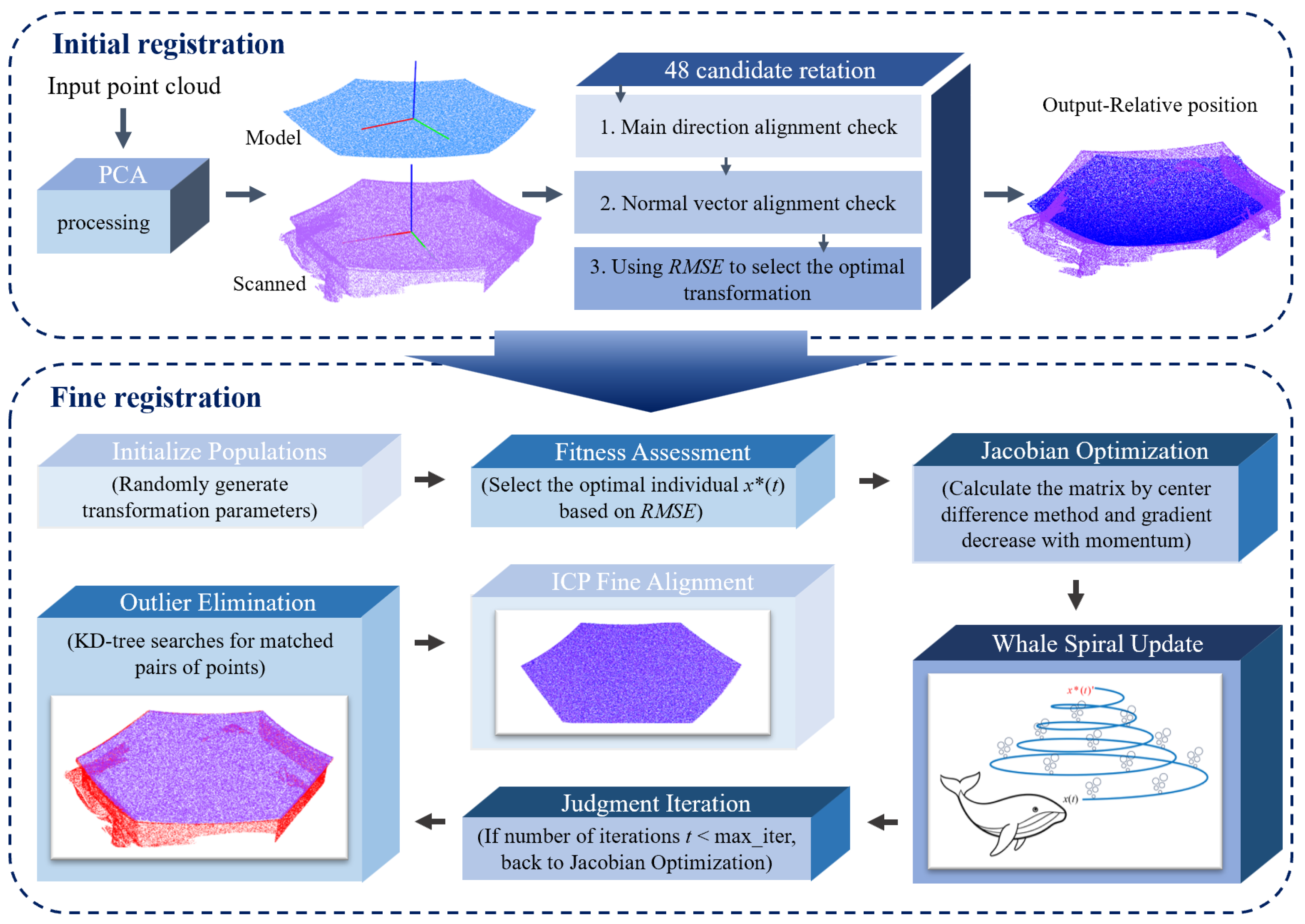

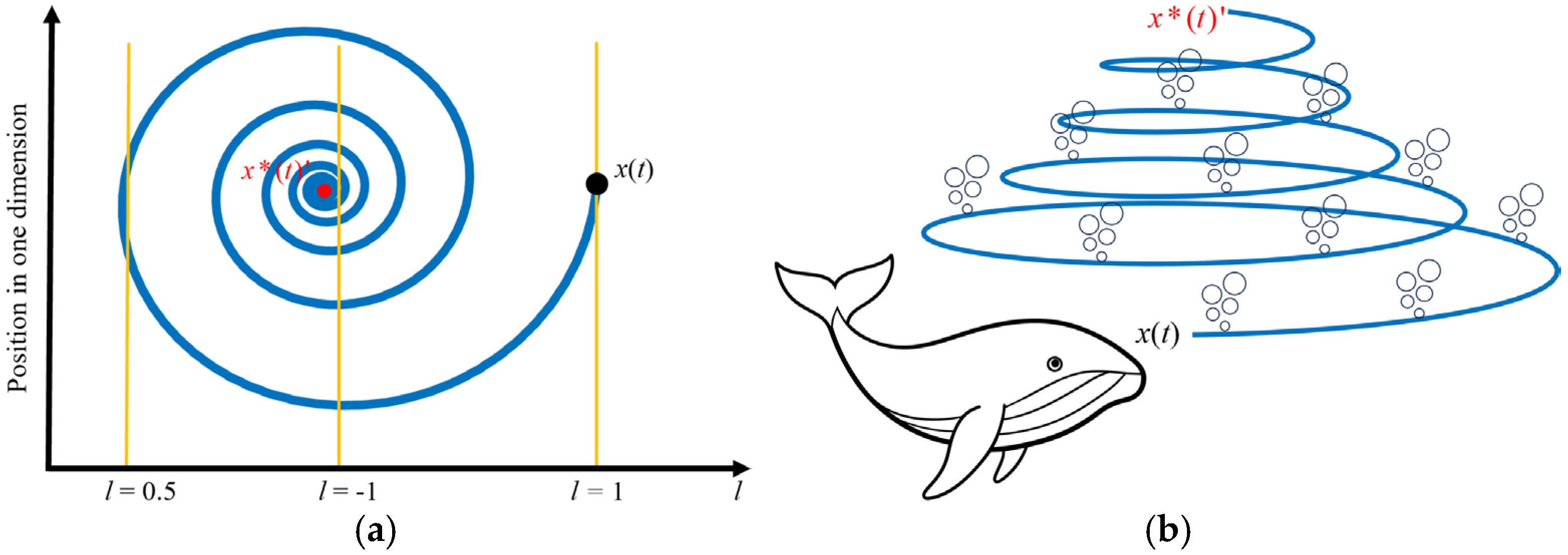
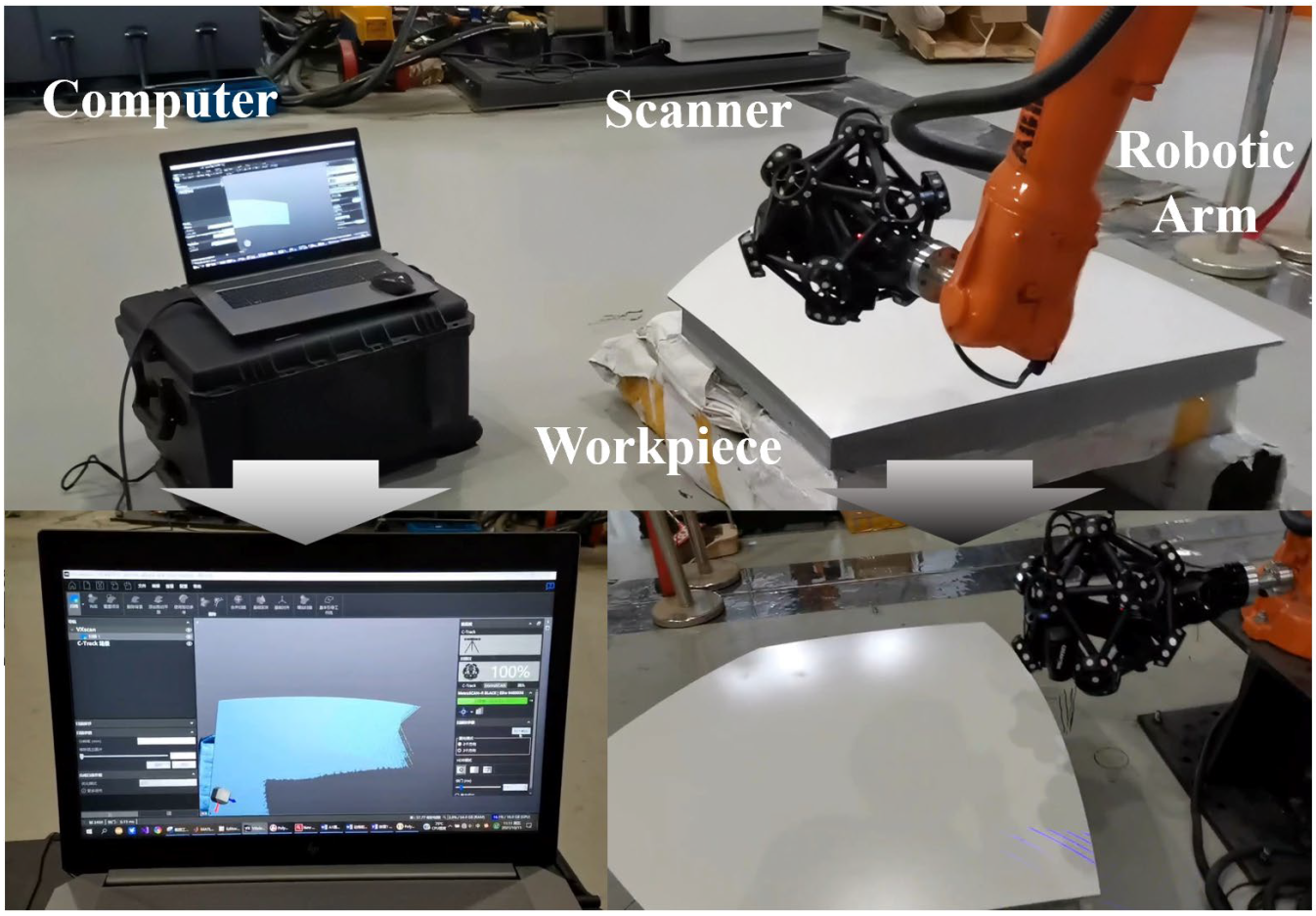




| Algorithm | Workpiece 1 | Workpiece 2 | Workpiece 3 |
|---|---|---|---|
| Initial position |  |  | 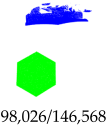 |
| Model/scanned points | 54,118/148,111 | 88,444/137,087 | 98,026/146,568 |
| SAC-IA |  |  |  |
| 4PCS |  |  |  |
| PCA |  |  |  |
| Improved PCA |  |  |  |
| Test Object | Model Points/ Scanned Points | PCA | Improved PCA | |||
|---|---|---|---|---|---|---|
| Candidate Matrix | Runtime (s) | Candidate Matrix (After Check 1) | Candidate Matrix (After Check 2) | Runtime (s) | ||
| Workpiece 1 | 54,118/148,111 | 48 | 454.05 | 8 | 4 | 6.93 |
| 270,576/741,470 | 48 | - | 8 | 4 | 124.48 | |
| 541,120/1,484,222 | 48 | - | 8 | 4 | 294.55 | |
| Workpiece 2 | 88,444/137,087 | 48 | 720.38 | 8 | 4 | 8.12 |
| 442,093/685,665 | 48 | - | 8 | 4 | 189.53 | |
| 884,178/13,771,191 | 48 | - | 8 | 4 | 443.70 | |
| Workpiece 3 | 98,026/146,568 | 48 | 786.19 | 8 | 4 | 4.69 |
| 490,124/732,221 | 48 | - | 8 | 4 | 113.04 | |
| 980,242/1,462,181 | 48 | - | 8 | 4 | 284.77 | |
| Algorithm | Object (Workpiece) | Optimal Value for the Variable | Normalized RMSE | Actual RMSE/mm | ||||||
|---|---|---|---|---|---|---|---|---|---|---|
| α/° | β/° | γ/° | Xt/mm | Yt/mm | Zt/mm | Runtime/s | ||||
| JWOA-FR | 1 | 2.25 | 2.01 | 6.06 | −235.72 | −170.01 | 230.12 | 0.0019 | 2.4919 | 28.53 |
| 2 | 3.67 | 9.84 | −10.67 | 34.64 | −9.25 | 165.09 | 0.0019 | 2.3997 | 50.77 | |
| 3 | 1.46 | 5.21 | 12.87 | −79.20 | 15.99 | −116.13 | 0.0021 | 2.6204 | 30.45 | |
| E-WOA | 1 | 4.08 | 4.44 | 2.68 | −230.47 | −154.63 | 244.26 | 0.0024 | 3.3004 | 30.07 |
| 2 | 4.14 | 8.63 | −9.59 | 61.69 | −10.64 | 162.87 | 0.0023 | 4.0967 | 58.10 | |
| 3 | −0.88 | 1.91 | 4.92 | −69.33 | −4.86 | −123.12 | 0.0029 | 3.6054 | 35.47 | |
| WOA | 1 | −4.42 | −6.45 | 15.92 | −162.62 | −191.16 | 244.90 | 0.0110 | 15.2069 | 35.95 |
| 2 | 4.77 | 3.13 | −2.04 | 4.74 | 30.92 | 196.84 | 0.0085 | 10.8118 | 61.58 | |
| 3 | −1.17 | −5.16 | −8.07 | −110.56 | −68.34 | −82.28 | 0.0101 | 12.6119 | 38.94 | |
| ICP | 1 | 3.70 | −1.39 | 0.40 | −146.03 | −211.93 | 232.34 | 0.0153 | 20.3383 | 31.73 |
| 2 | −5.74 | 6.39 | 3.90 | 15.97 | −21.68 | 154.67 | 0.0050 | 6.1995 | 55.68 | |
| 3 | 2.64 | 0.75 | −1.93 | −53.12 | −21.08 | −120.75 | 0.0048 | 6.0463 | 34.97 | |
| Algorithm | Workpiece1 | Workpiece2 | Workpiece3 |
|---|---|---|---|
| JWOA-FR | 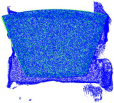 |  | 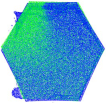 |
| E-WOA |  | 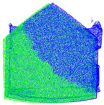 | 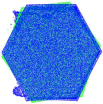 |
| WOA | 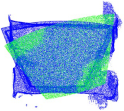 |  | 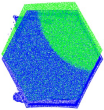 |
| ICP | 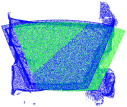 | 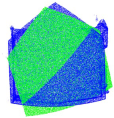 | 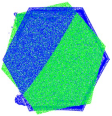 |
Disclaimer/Publisher’s Note: The statements, opinions and data contained in all publications are solely those of the individual author(s) and contributor(s) and not of MDPI and/or the editor(s). MDPI and/or the editor(s) disclaim responsibility for any injury to people or property resulting from any ideas, methods, instructions or products referred to in the content. |
© 2025 by the authors. Licensee MDPI, Basel, Switzerland. This article is an open access article distributed under the terms and conditions of the Creative Commons Attribution (CC BY) license (https://creativecommons.org/licenses/by/4.0/).
Share and Cite
Chu, H.; Fan, J.; Luo, Z.; Cheng, Y.; Tang, Y.; Li, Y. An Improved PCA and Jacobian-Enhanced Whale Optimization Collaborative Method for Point Cloud Registration. Photonics 2025, 12, 823. https://doi.org/10.3390/photonics12080823
Chu H, Fan J, Luo Z, Cheng Y, Tang Y, Li Y. An Improved PCA and Jacobian-Enhanced Whale Optimization Collaborative Method for Point Cloud Registration. Photonics. 2025; 12(8):823. https://doi.org/10.3390/photonics12080823
Chicago/Turabian StyleChu, Haiman, Jingjing Fan, Zai Luo, Yinbao Cheng, Yingqi Tang, and Yaru Li. 2025. "An Improved PCA and Jacobian-Enhanced Whale Optimization Collaborative Method for Point Cloud Registration" Photonics 12, no. 8: 823. https://doi.org/10.3390/photonics12080823
APA StyleChu, H., Fan, J., Luo, Z., Cheng, Y., Tang, Y., & Li, Y. (2025). An Improved PCA and Jacobian-Enhanced Whale Optimization Collaborative Method for Point Cloud Registration. Photonics, 12(8), 823. https://doi.org/10.3390/photonics12080823





